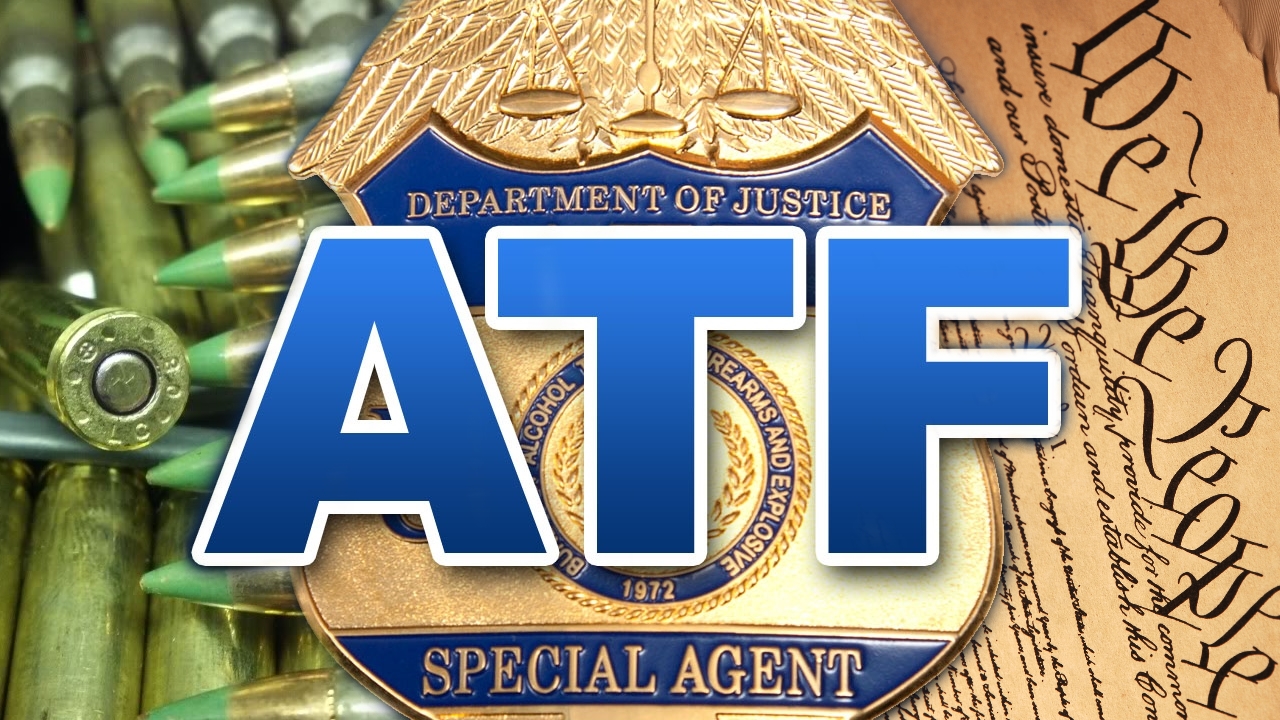Millions of gun owners could be challenged in court and lose their firearms if DOJ doesn’t step in to stop crazy ATF rule
- Millions of Americans face federal felony charges due to ATF’s reclassification of pistol braces.
- The proposed rule, part of Biden’s unilateral push for stricter gun laws, would subject stabilizing braces to the National Firearms Act.
- Gun rights groups urge the DOJ to drop charges in the U.S. v. Taranto case, which could set a dangerous precedent.
- The ATF’s reclassification threatens to criminalize a widely used accessory, originally designed to assist disabled veterans.
Biden’s war on gun owners: the pistol brace crackdown of 40 millions guns
On June 7th, the Bureau of Alcohol, Tobacco, Firearms and Explosives (ATF) posted a new proposed regulation notice on its website, titled “Factoring Criteria for Firearms with Attached ‘Stabilizing Braces.'” This proposal, published in the Federal Register on June 10th, 2021, marks a significant shift in the ATF’s stance on stabilizing braces, a device widely used by gun owners. The rule, part of President Joe Biden’s unilateral push for stricter gun laws, threatens to subject nearly all firearms equipped with stabilizing braces to the stringent tax and registration requirements of the National Firearms Act (NFA).
For years, the ATF acknowledged that stabilizing braces serve a valid purpose, particularly for disabled veterans, and that adding one to a pistol or similar firearm did not necessarily trigger NFA compliance. However, the Biden administration’s decision to target these braces has sent shockwaves through the gun-owning community, potentially criminalizing millions of Americans who legally purchased and used these accessories.
A dangerous precedent: The U.S. v. Taranto case
The Department of Justice (DOJ) is currently pursuing criminal charges in the U.S. District Court for the District of Columbia against a man named Taranto, specifically for possession of a handgun equipped with a pistol stabilizing brace. This case, U.S. v. Taranto, could set a dangerous precedent for the millions of Americans who own up to 40 million such firearms.
Gun Owners of America (GOA) and the Firearms Regulatory Accountability Coalition (FRAC) have urged the DOJ to drop the charge, arguing that it sets a dangerous precedent. The groups are clear in their letter: “We express no opinion on any of the other unrelated charges levied against Mr. Taranto.” Their focus is on the NFA charge, which, if upheld, could pave the way for widespread criminalization of gun owners.
The history and purpose of stabilizing braces
Stabilizing braces were originally designed to assist disabled gun owners, particularly veterans, in using larger-caliber pistols effectively with one hand. For years, the ATF approved these devices for use on pistols of all kinds, assuring gun owners that the mere attachment of a stabilizing brace did not transform a pistol into a short-barreled rifle (SBR) under the NFA. However, the Biden administration’s decision to reclassify these braces as SBRs has upended this long-standing understanding.
The Congressional Research Service (CRS) report, “Handguns, Stabilizing Braces, and Related Components,” highlights the legal gray area surrounding these devices. The report notes that the defining characteristic of a long gun (shotgun or rifle) is its intention to be fired from the shoulder, which implies the presence of a shoulder stock. Stabilizing braces, which can be used to brace a firearm against the forearm, have been a point of contention. The ATF’s 2012 determination that attaching a stabilizing brace to an AR-type pistol did not change its classification from a GCA-regulated handgun to an NFA-regulated SBR was a significant milestone. However, the Biden administration’s recent actions have reversed this stance, creating legal uncertainty and potential criminal liability for gun owners.
The legal and practical implications
The ATF’s reclassification of stabilizing braces as SBRs would subject gun owners to extensive paperwork, background checks, and registration requirements under the NFA. Failure to comply could result in severe penalties, including up to ten years in prison and a $250,000 fine. This has led to widespread outrage among gun rights advocates, who argue that the rule is an overreach and a violation of the Second Amendment.
Despite numerous lawsuits and court injunctions, the ATF and DOJ continue to enforce the underlying legal theories that inspired the rule. In a brief filed by the DOJ, lawyers stated, “ATF is not barred from continuing to enforce the underlying statute as it always has: by making case-by-case determinations about whether particular braced firearms constitute ‘rifles’ under the statute.” This statement suggests that the ATF believes it can still charge gun owners with NFA violations, even though the rule itself is enjoined.
Call to action
Gun rights groups like GOA and FRAC are calling on the U.S. Attorney’s Office in Washington, D.C., to investigate this federal government overreach and dismiss the pistol brace charge against Taranto. They argue that the charge is not only unjust but also sets a dangerous precedent that could affect millions of law-abiding gun owners.
The case of U.S. v. Taranto is a critical test of the ATF’s and DOJ’s commitment to the rule of law and the rights of gun owners. If the DOJ pushes forward with this charge, it could signal a broader effort to criminalize the use of stabilizing braces, regardless of the legal challenges and court rulings.
As the legal battle over stabilizing braces continues, the fate of millions of gun owners hangs in the balance. The Biden administration’s efforts to reclassify these widely used accessories as SBRs have created a climate of fear and uncertainty among the gun-owning community. The U.S. v. Taranto case is a stark reminder that the fight for gun rights is far from over. Will the DOJ and ATF continue to pursue a course that criminalizes innocent Americans, or will they recognize the absurdity of their actions and stand down? The answer to this question will have far-reaching implications for the future of gun ownership in the United States.
Sources include:
Zerohedge.com
Gunowners.org
Congress.gov
Read full article here


